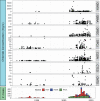Documentation and Prediction of Increasing Groundwater Chloride in the Twin Cities, Minnesota
- PMID: 35836100
- PMCID: PMC9796066
- DOI: 10.1111/gwat.13227
Documentation and Prediction of Increasing Groundwater Chloride in the Twin Cities, Minnesota
Abstract
We provide a comprehensive overview of historic chloride concentrations in the groundwater of the Twin Cities metropolitan area (TCMA) in Minnesota, in order to define the extent of chloride contamination, due primarily to the seasonal application of deicing salt to roadways. Data collected from 1278 wells between 1965 and 2020 are representative of the major aquifers underlying the TCMA and establish a regional natural background chloride concentration of less than 10 mg/L. However, 55% of all measurements (1616 of 2943) are above 10 mg/L, with the highest concentrations found within the uppermost Quaternary aquifers. Chloride concentrations in underlying bedrock aquifers are negatively correlated with the thickness and clay composition of overlying materials. Most chloride measurements (92%) remain below chronic exposure limits set by state and federal authorities. Historical trends indicate that, if the current imbalance between chloride inputs and outflows persists, chloride concentrations in TCMA aquifers will surpass regulatory thresholds by midcentury as surface waters and Quaternary aquifer waters migrate into underlying bedrock aquifers. Most wells in this study are monitored annually, making it impossible to detect important sub-annual fluctuations of chloride concentration that can exceed 40%.
© 2022 The Authors. Groundwater published by Wiley Periodicals LLC on behalf of National Ground Water Association.
Figures











References
-
- Alexander, E.C. Jr. , and Lively R.S.. 1995. Karst‐aquifers, caves and sinkholes. In Text Supplement to the Geologic Atlas, Fillmore County, Minnesota. Minnesota Geological Survey County Atlas Series C‐8, Part C, ed. Lively R.S., and Balaban N.H., 10–18. St. Paul, MN: Minnesota Geological Survey.
-
- Anderson, J.R. , Runkel A.C., Tipping R.G., Barr K., and Alexander E.C. Jr. 2011. Hydrostratigraphy of a fractured urban aquitard. Geological Society of America Field Guides 24: 457–475.
-
- Balaban, N.H. 1989. C‐04 Geologic Atlas of Hennepin County, Minnesota. Minnesota Geological Survey. Retrieved from the University of Minnesota Digital Conservancy, https://hdl.handle.net/11299/58491.
-
- Balaban, N.H. and Hobbs H.C.. 1990. C‐06 Geologic Atlas of Dakota County, Minnesota. Minnesota Geological Survey. Retrieved from the University of Minnesota Digital Conservancy, https://hdl.handle.net/11299/58494.
-
- Balaban, N.H. and McSwiggen P.L.. 1982. C‐01 Geologic Atlas of Scott County, Minnesota. Minnesota Geological Survey. Retrieved from the University of Minnesota Digital Conservancy, https://hdl.handle.net/11299/58232.
Publication types
MeSH terms
Substances
LinkOut - more resources
Full Text Sources

